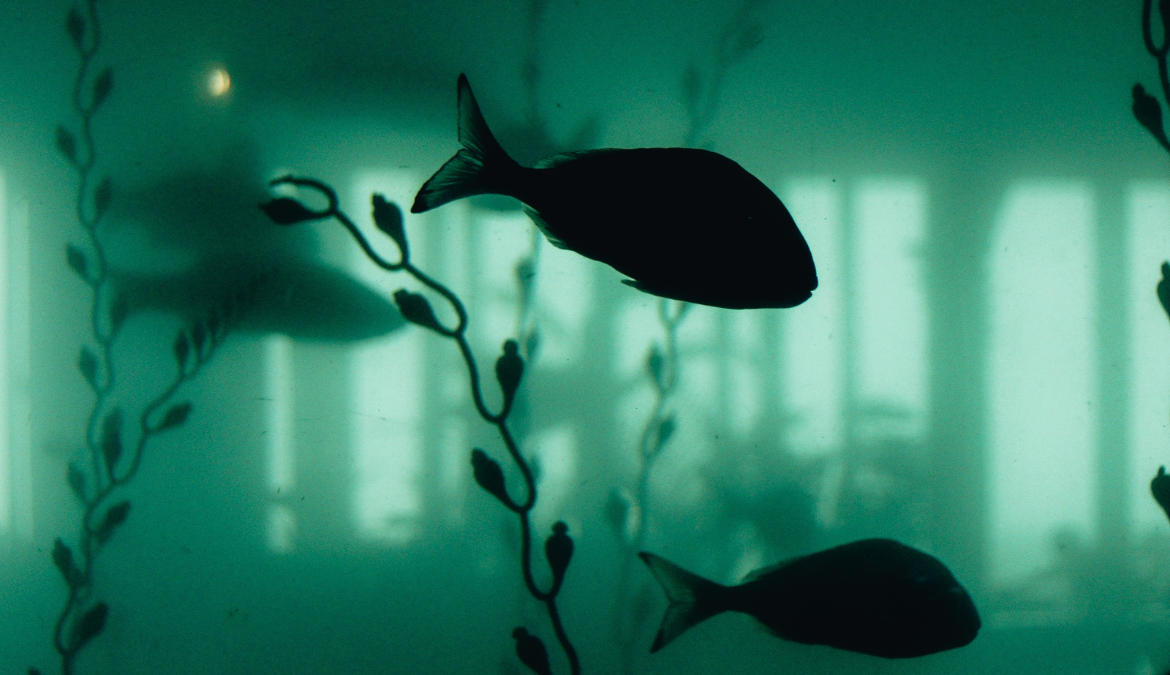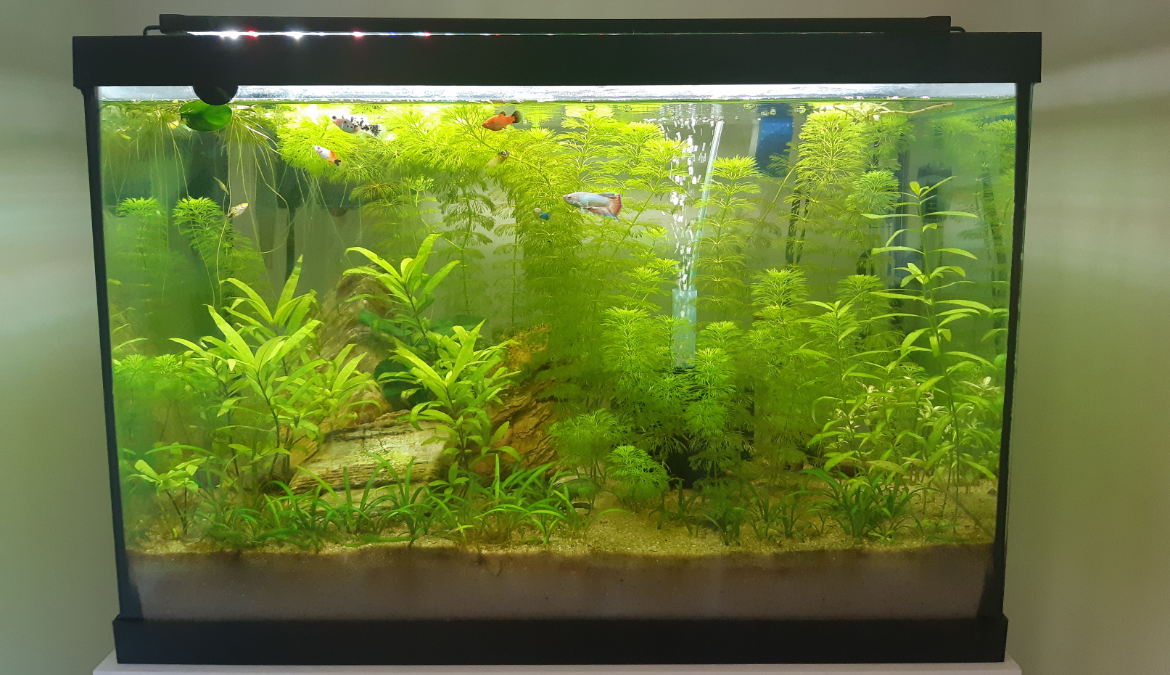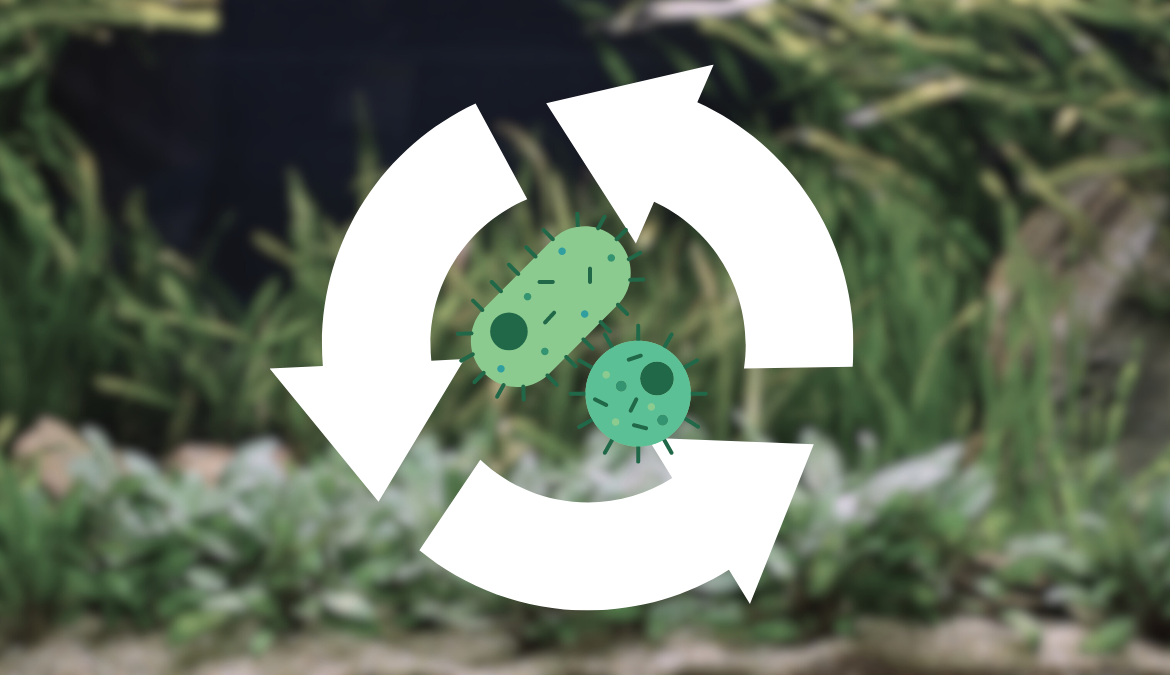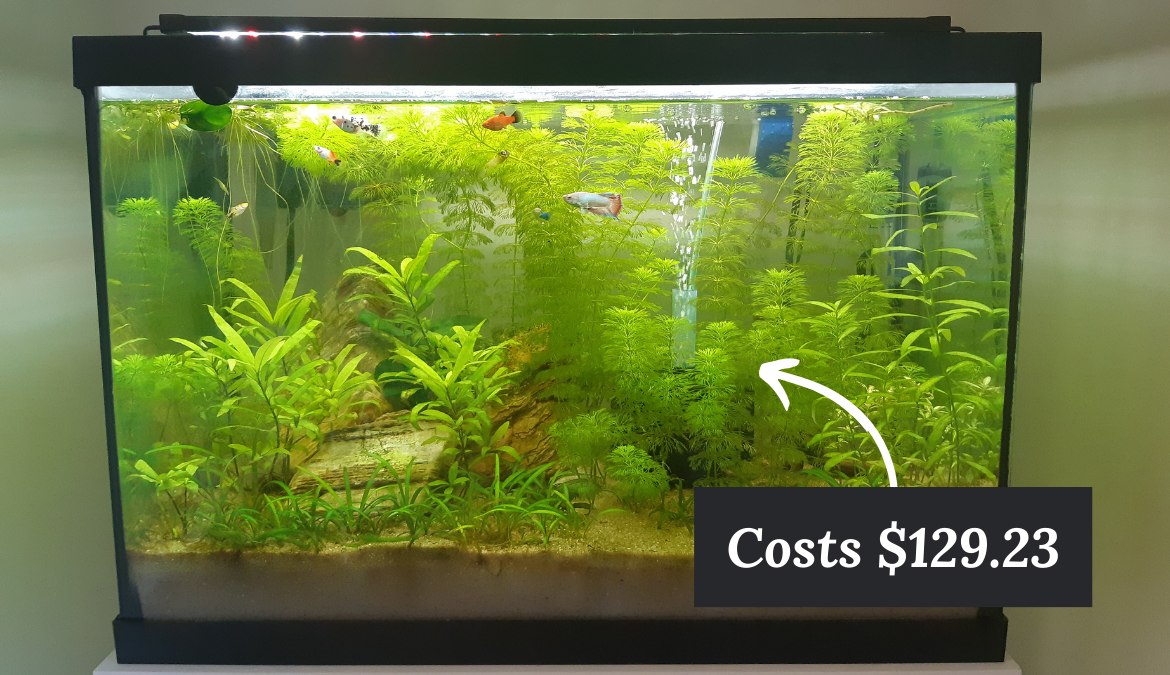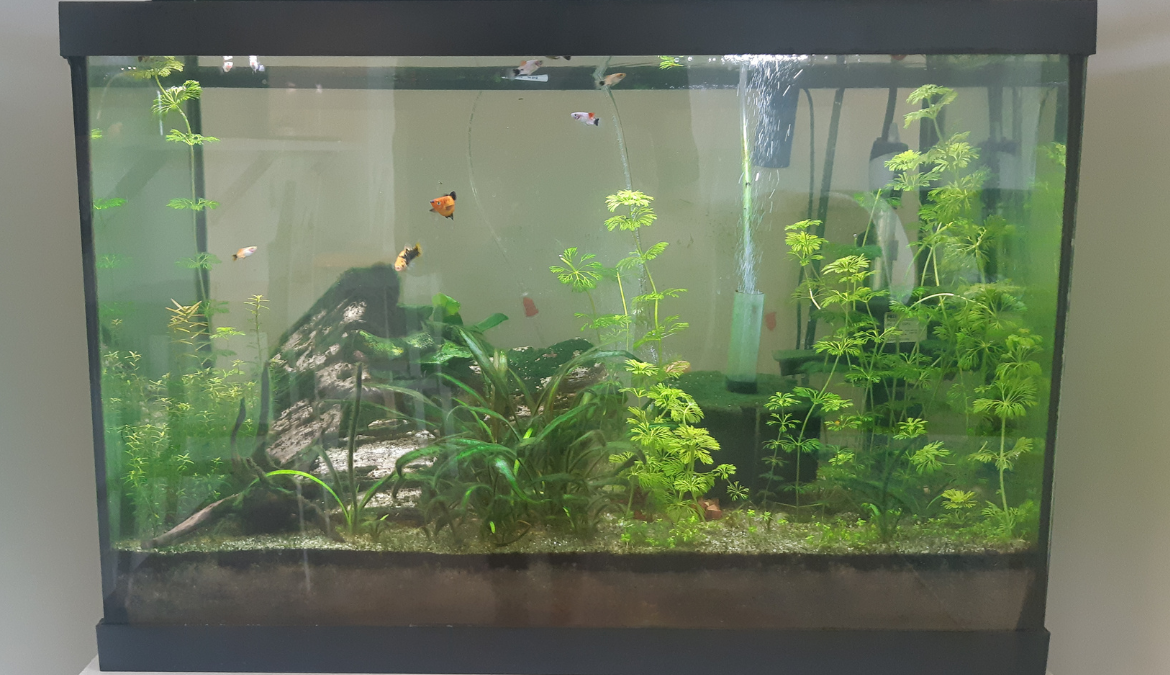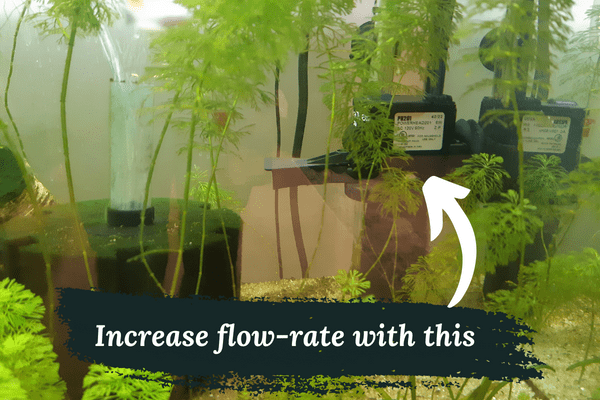Lighting is one of the most confusing but important aspects of keeping a low-tech planted aquarium. It plays a crucial role in allowing our aquatic plants to photosynthesize, but is often the cause of pesky algae outbreaks.
This article reveals a simple lighting strategy for your low-tech setup.
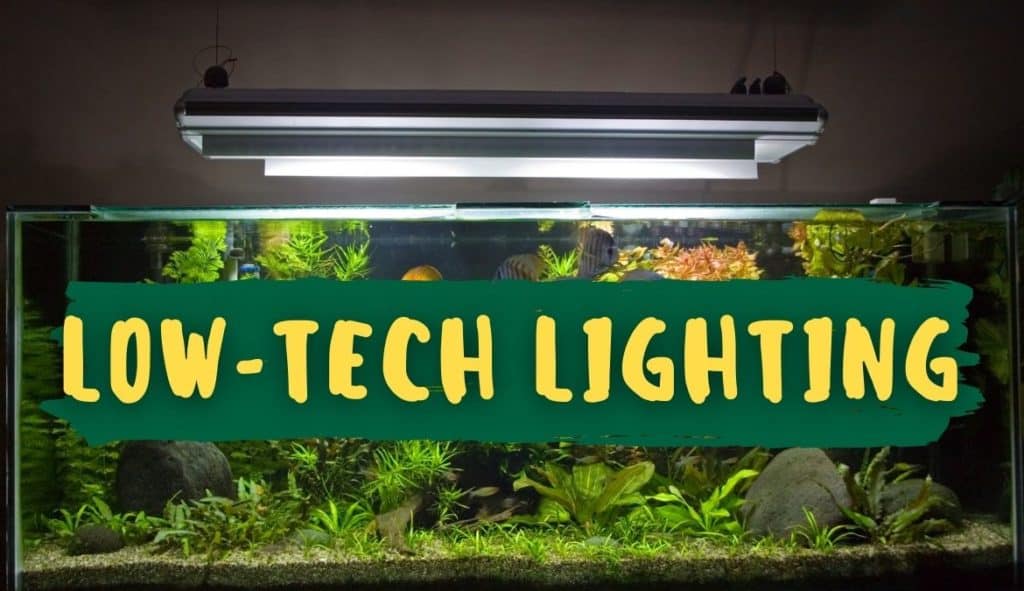
Contents
- 1 How much light do you need for a low-tech planted tank?
- 2 How many hours of light do you need for a low tech planted tank?
- 3 What light spectrum is required for low-tech plants?
- 4 Are LEDs good lights for low-tech tanks?
- 5 Which color light is best for plant growth?
- 6 Should you turn off your aquarium light at night?
- 7 How many watts of light does a planted tank need?
How much light do you need for a low-tech planted tank?
An 8-hour photoperiod with 40-50 PAR is an optimal range for most low-tech planted aquariums. It’s enough to achieve photosynthesis, but not too much that it will promote algae growth.
Buy a light with 40-50 PAR at your substrate depth
PAR stands for photosynthetically active radiation. It measures how many micromoles of photons are absorbed into each square meter of plant every second.
A higher PAR value means more light energy can be absorbed into the plant, assuming it can be utilized for photosynthesis. As a result, many planted tank keepers consider PAR to be the most useful lighting metric.
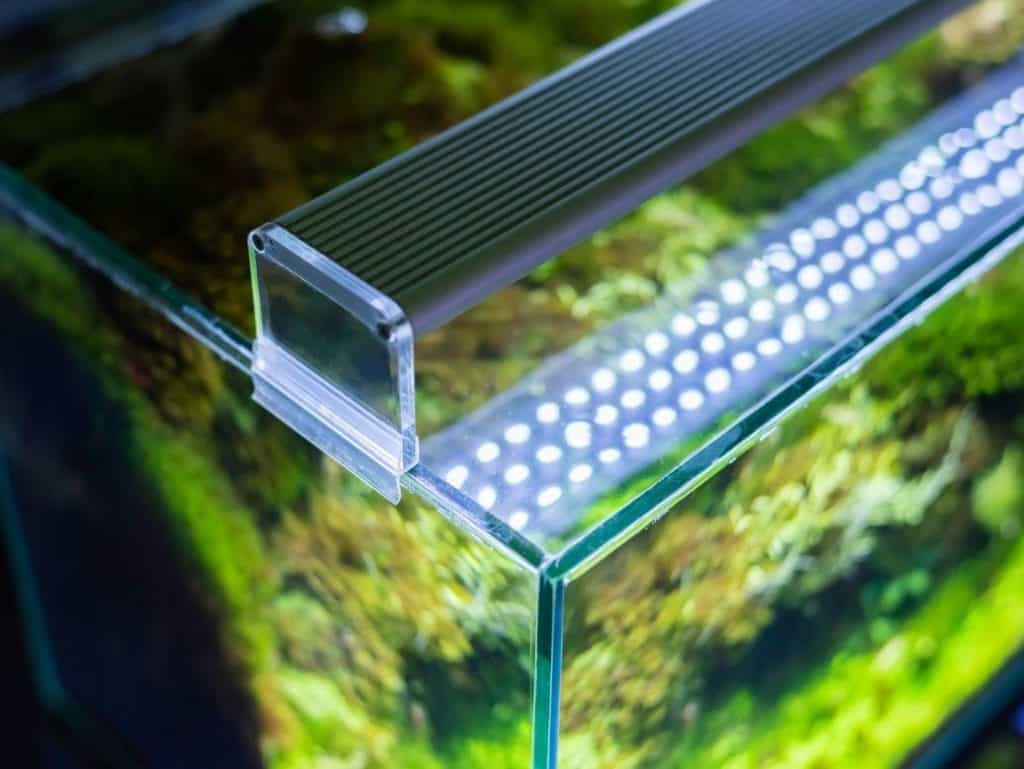
A light’s PAR value will be higher when plants are closer to light. This is because there is a higher concentration of photons hitting the plant.
As you move away from a light source, the waves disperse over a greater area, which reduces the concentration of photons that a plant can absorb.

It matters how far your light is from your plants
In the image below, you will notice that our NICREW LED light is rated at 70 PAR at a distance of 30 centimeters, or about 12 inches.

This means that this light will give off 70 PAR at this distance. But if your tank was 16-inches deep, then the PAR rating would be a little lower at the tank’s full depth.
Also, notice how it reads “in air.” This means the PAR rating was tested through the air and not water. Water will reduce the PAR rating by about 10-15%.
Therefore, the PAR rating at 30cm in an aquarium is likely somewhere around 55-65.
For low-tech tanks, we recommend a light that provides at least 40-50 PAR at your tank’s substrate depth.
You will likely end up lowering the intensity a little bit anyways, but it’s good to have a little more than you need at first. As your plants grow they will demand more light and taller plants will reduce light that reaches the bottom.
Adjust your intensity based algae growth
A common mistake for low-tech aquarists is to blast their lights on full intensity. After all, it makes our tanks look the nicest, right?
It’s likely that your light’s highest intensity will provide more light than your plants can handle. We recommend turning the intensity down to 30-50% for the first few weeks.
Monitor your plant and algae growth and then adjust from here. If your plants don’t appear to be growing, bump the intensity up and make sure you are providing adequate plant fertilization.
If you are getting large algae blooms, consider turning down your intensity for a couple weeks and reassess. The excess light will allow algae to grow rampant.
How many hours of light do you need for a low tech planted tank?
Low-tech planted tanks require 8-10 hours of light per day on medium intensity. A longer photoperiod will likely cause algae blooms to occur. A 6-hour photoperiod is often beneficial in the first couple weeks as your plants begin to establish.
We recommend buying a light system with a built-in timer, or buying a separate timer adapter that our lights plug into.
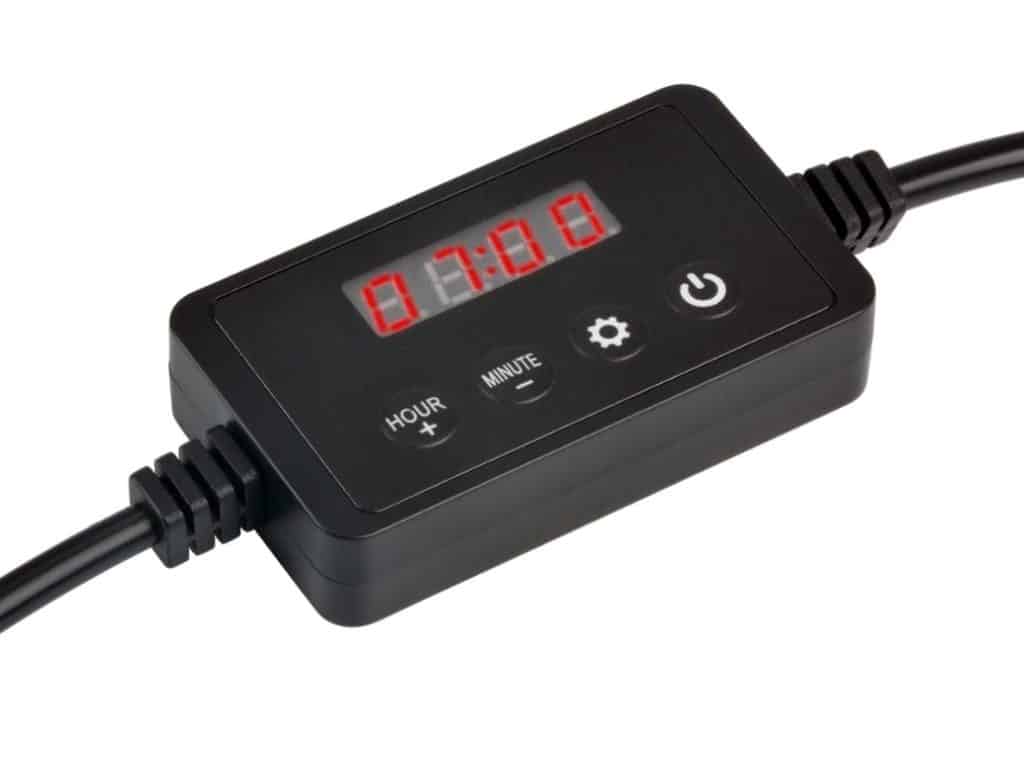
These timers will automatically turn your aquarium lights on and off at the same time each day, giving your plants a consistent duration of light.
Some timers also have a ramp up and ramp down period where the lights slowly turn on and off. This simulates a more natural sunrise and sunset period. It also eases your fish into the lights as they turn on.
What light spectrum is required for low-tech plants?
All aquarium plants benefit from a full-spectrum light that contains red, green and blue wavelengths. Many people learn that plants get their green color by absorbing red and blue light, while reflecting green light.
This is true. But it’s also true that plants still absorb certain green light waves for photosynthesis.
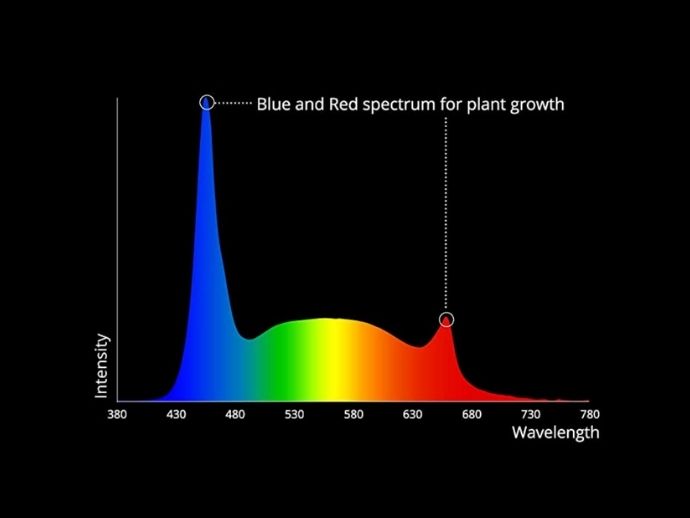
You’ll often see some version of the graph above in marketing material. This graph demonstrates the spectrum of light that is produced by the light.
Low-tech plants are not highly demanding when it comes to light, so there is no need to worry too much about light spectrum.
Just know that a fairly balanced spectrum, like shown in the image above, will provide your plants with everything they need when it comes to light.
Are LEDs good lights for low-tech tanks?
LEDs are an excellent option for low-tech planted tanks because they have adjustable intensity, give off little heat, last for a long time and consume little energy. One drawback is that they can be a little more expensive when compared to metal halide and fluorescent bulbs.
Which color light is best for plant growth?
5500K to 6500K is widely considered an optimal color temperature for freshwater planted aquariums. This daylight range contains a good mix of red, green and blue colors. Higher Kelvin lights appear blue and cooler, while lower Kelvin lights appear red and warm.
Should you turn off your aquarium light at night?
Turning off your aquarium light at night allows your fish to relax and sleep. Aquatic plants will stop photosynthesizing during this period, but will continue to respire. This means the CO2 levels in your tank will rise slightly, while the oxygen levels decrease.
How many watts of light does a planted tank need?
Watts per gallon is an outdated figure that was used to estimate how intense an aquarium light may be. A general rule of thumb was 2-5 watts per gallon.
This figure simply measures the amount of power required to turn a light on. This number does not give much information regarding the intensity of the light. Also, LEDs and other and other light technologies have become substantially more efficient, rendering the watts per gallon metric almost useless.


